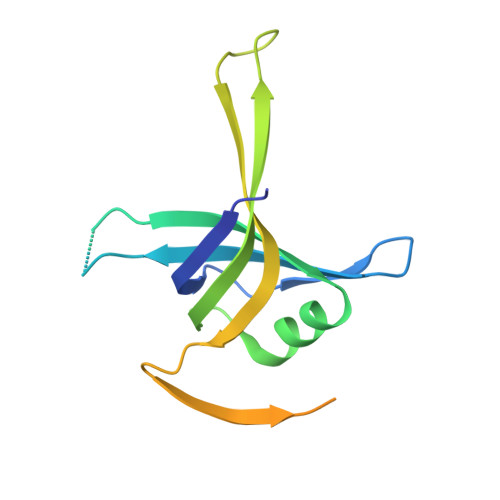Structure of Mycobacterium smegmatis single-stranded DNA-binding protein and a comparative study involving homologus SSBs: biological implications of structural plasticity and variability in quaternary association.
Saikrishnan, K., Manjunath, G.P., Singh, P., Jeyakanthan, J., Dauter, Z., Sekar, K., Muniyappa, K., Vijayan, M.(2005) Acta Crystallogr D Biol Crystallogr 61: 1140-1148
- PubMed: 16041080
- DOI: https://doi.org/10.1107/S0907444905016896
- Primary Citation of Related Structures:
1X3E, 1X3F, 1X3G - PubMed Abstract:
The structure of Mycobacterium smegmatis single-stranded DNA-binding protein (SSB) has been determined using three data sets collected from related crystals. The structure is similar to that of its homologue from Mycobacterium tuberculosis, indicating that the clamp arrangement that stabilizes the dimer and the ellipsoidal shape of the tetramer are characteristic features of mycobacterial SSBs. The central OB fold is conserved in mycobacterial SSBs as well as those from Escherichia coli, Deinococcus radiodurans and human mitochondria. However, the quaternary structure exhibits considerable variability. The observed plasticity of the subunit is related to this variability. The crystal structures and modelling provide a rationale for the variability. The strand involved in the clamp mechanism, which leads to higher stability of the tetramer, appears to occur in all high-G+C Gram-positive bacteria. The higher stability is perhaps required by these organisms. The mode of DNA binding of mycobacterial SSBs is different from that of E. coli SSB partly on account of the difference in the shape of the tetramers. Another difference between the two modes is that the former contains additional ionic interactions and is more susceptible to salt concentration.
- Molecular Biophysics Unit, Indian Institute of Science, Bangalore 560 012, India.
Organizational Affiliation:

















